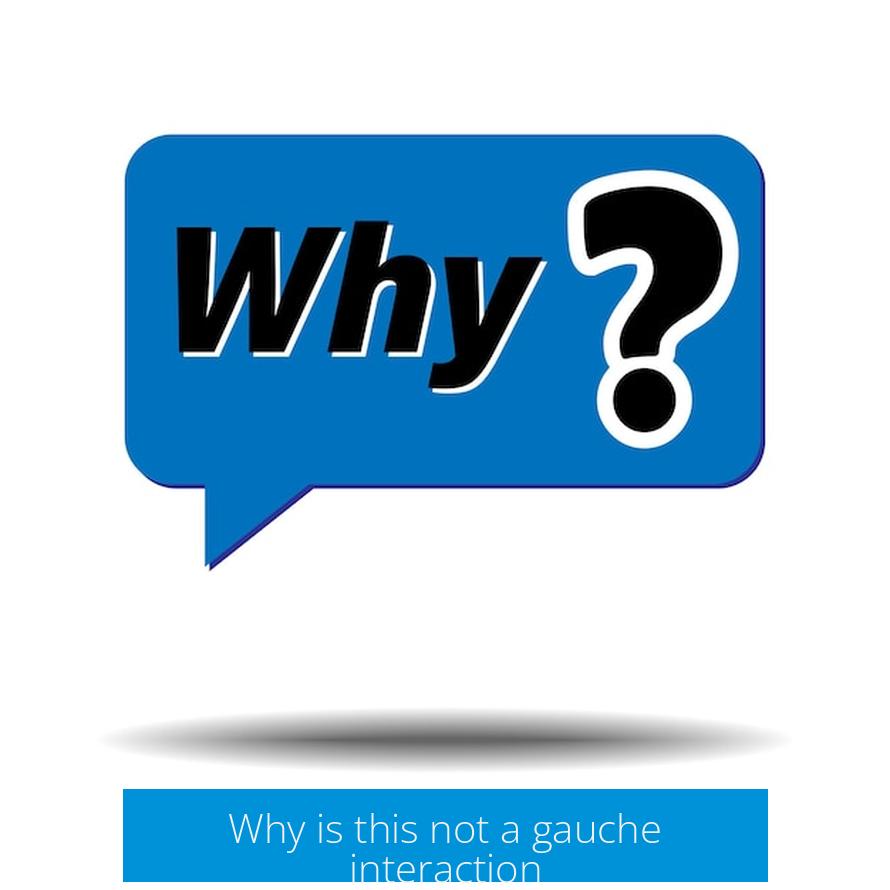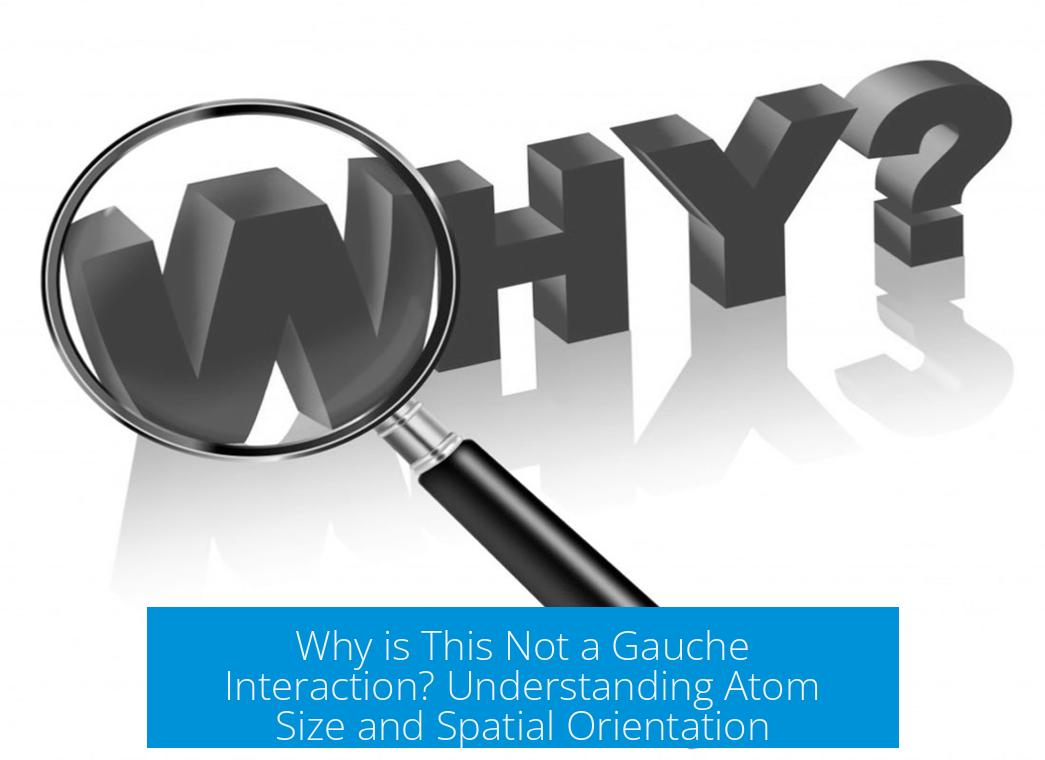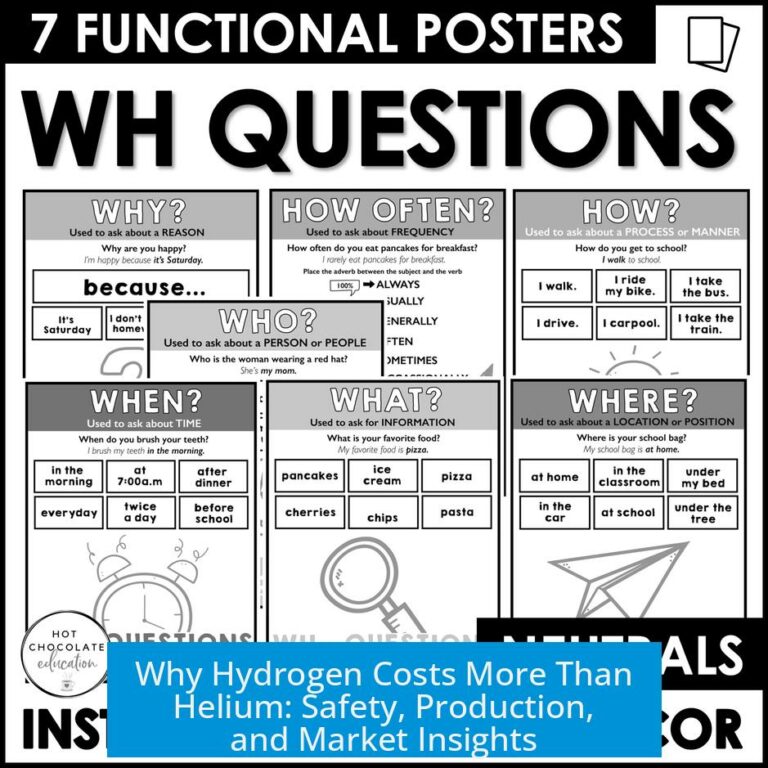Why is this not a gauche interaction?

This is not a gauche interaction because the groups involved either include hydrogen atoms, which have minimal torsional strain, or the larger substituents (like bromines) are arranged antiperiplanar, not gauche, thus lacking the spatial relationship needed for a gauche interaction.
Understanding Gauche Interaction
Gauche interactions refer to steric strain occurring between two substituents positioned about 60° apart around a bond (a dihedral angle near 60°). These interactions typically involve larger, non-hydrogen groups. They induce torsional strain due to electron cloud repulsion and steric hindrance.
Hydrogen atoms are generally excluded when identifying gauche interactions. Their small size means their contribution to torsional strain is negligible. Thus, even if two hydrogens are gauche to each other, they do not cause a meaningful gauche interaction.
Role of Atom Size in Gauche Interactions
- Atoms or groups larger than hydrogen cause noticeable gauche interactions.
- Hydrogen atoms contribute minimal steric hindrance.
- Evaluations focus on the interactions of significant substituents.
This explains why adjacent hydrogens in a molecule may not be considered gauche interacting groups.
Spatial Orientation of Bromines
In the molecule examined, bromine atoms are antiperiplanar, meaning they are approximately 180° apart. This arrangement minimizes torsional strain. Since gauche interaction arises only from near 60° dihedral angle positioning, bromines here do not create such an interaction.
Additionally, their distance is sufficient to prevent significant steric repulsion.
Adjacency vs. Gauche Interaction
Adjacency does not guarantee a gauche interaction. The term “gauche” relates to the spatial (torsional) relationship, not solely to being neighbors. Two adjacent hydrogens might not have a dihedral angle near 60° or contribute enough to steric strain to define a gauche interaction.
Summary
- Gauche interactions involve large substituents at ~60° dihedral angles causing steric strain.
- Hydrogen atoms are typically excluded due to minimal interaction energy.
- Bromine atoms in question are antiperiplanar, so they do not form gauche interactions.
- Adjacency alone does not establish a gauche interaction; spatial orientation and atom size matter.
What defines a gauche interaction in organic molecules?
Gauche interactions occur between two larger non-hydrogen groups positioned about 60° apart in a molecule. These interactions cause noticeable torsional strain due to repulsion between bulky groups.
Why are hydrogen atoms often excluded from gauche interaction considerations?
Hydrogen atoms are very small and contribute minimal torsional strain. Their interactions are usually negligible compared to those of larger atoms, so they are not counted when identifying gauche interactions.
How does the spatial arrangement of bromine atoms affect gauche interactions?
Bromine atoms in this molecule are antiperiplanar, meaning they are 180° apart. This orientation prevents gauche interactions because the required 60° dihedral angle is not met.
Is adjacency between atoms enough to qualify as a gauche interaction?
No, adjacency alone does not guarantee a gauche interaction. The spatial angle between atoms and their size determine if the interaction is significant enough to be called gauche.
Can large groups fail to have gauche interactions if they are too far apart?
Yes. Even large substituents like bromine do not exhibit gauche interactions if the dihedral angle between them is not close to 60°, as the effective torsional strain is absent.





Leave a Comment